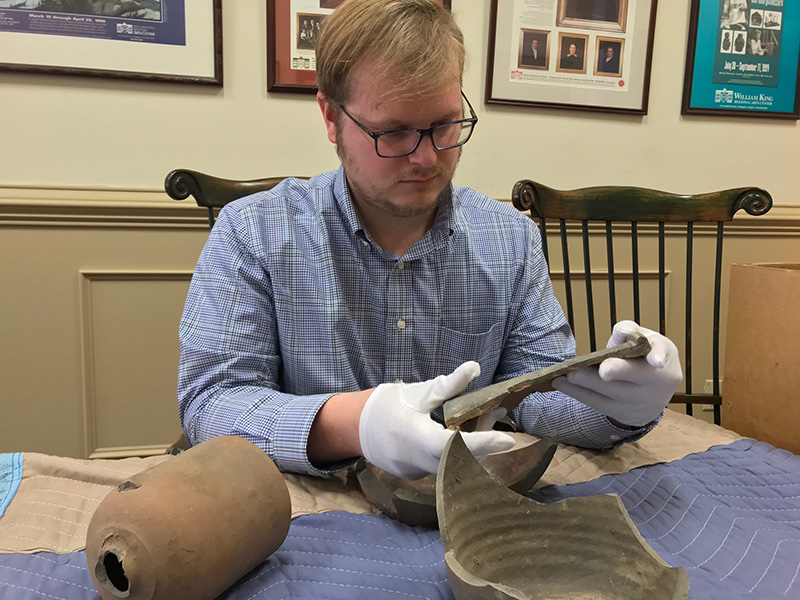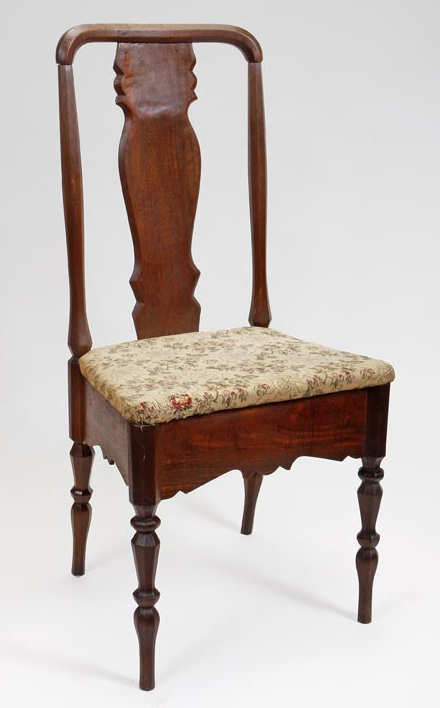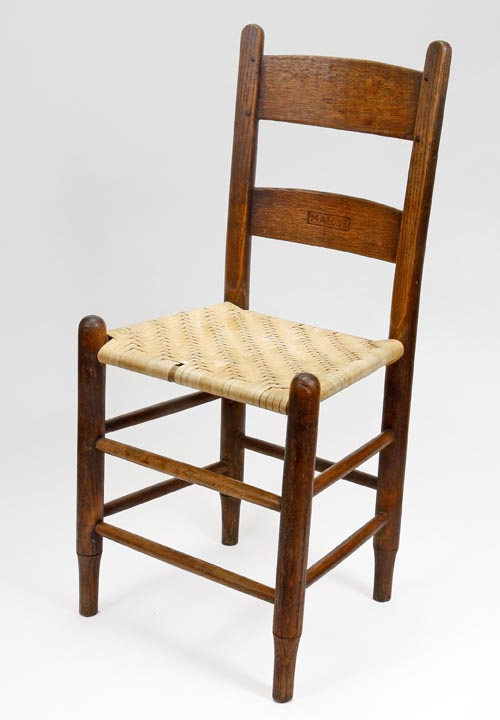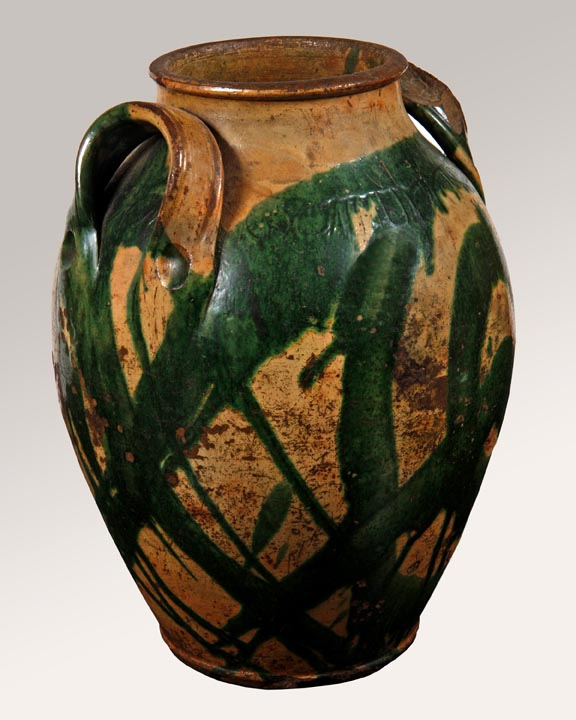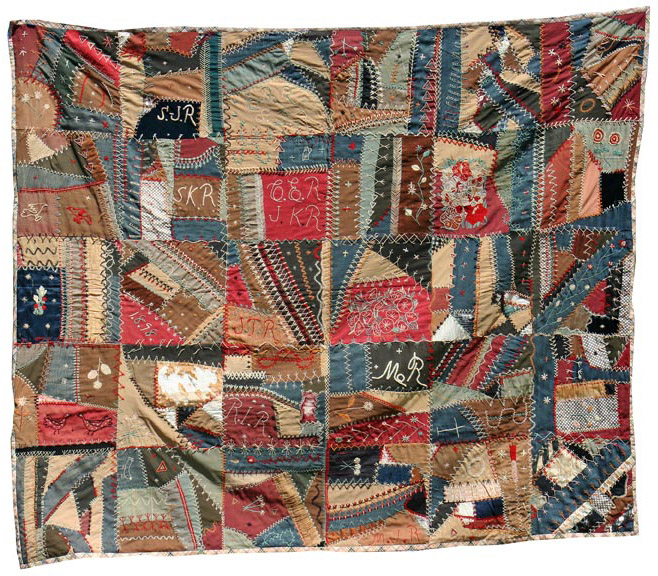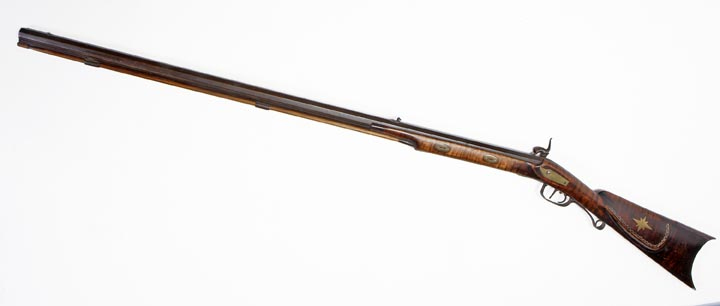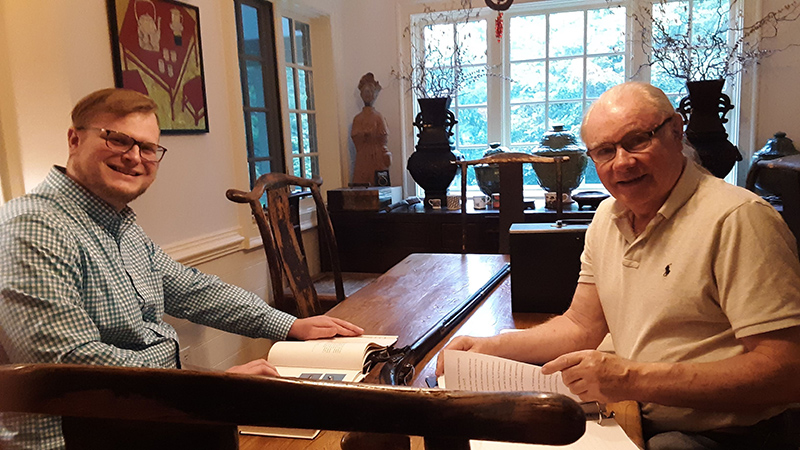Cultural Heritage Projects at the William King Museum of Art
by Drew Walton
The past two years have represented a monumental kick-start to my career working within the museum field. I recall writing a high school paper about possible professions, and even then I expressed an interest in the digital humanities. Secondary education led to higher education and to the William King Museum of Art (WKMA) in Abingdon, VA, where I am the 2019–2021 Decorative Arts Trust Digital Humanities Fellow, funded through the Marie and John Zimmermann Fund’s support of the Trust’s Curatorial Internship Grant program (figure 1).
The WKMA is located on the site of a boy’s school built in 1824 that later became a public high school. In 1992, the building was renovated as an art museum to house galleries instead of classrooms. The cornerstone project of my first year with the WKMA was the Cultural Heritage Project (CHP). The CHP was the brainchild of the director, Betsy White, who in 1994, started the project along with the help of Roddy Moore (the director of the Blue Ridge Institute at Ferrum College), Wallace Gusler (retired master gunsmith at Colonial Williamsburg), and the late Marcus King (the WKMA’s principal researcher). Together, they documented and photographed the decorative arts of Southwest Virginia and Northeast Tennessee, including furniture (figures 2 and 3), ceramics (figures 4 and 5), textiles (figure 6), and metalwork (figure 7), leading to a collection of 4,000 fieldwork files of this region. Building on these efforts, my role is to share the vast potential of the archived records via a publicly accessible online portal. From previous internships that involved digitization work, I knew the task of bringing these records up-to-date while scanning thousands of photographs for online research would be a challenging process. Despite this, I am delighted to report that the archive’s digitization was completed well ahead of our initial expectations.
The nature of this work is archival, delving into the physical records file cabinet by file cabinet. These are categorized by the type of decorative art they represent, arranged by county of origin by way of their provenance. After confirming the fieldwork documentation is in line with the records that will be uploaded for online consumption, I address any discrepancies and standardize the records for ease of access. The information is uploaded into the WKMA’s database along with scanned photographs. Once live, researchers will see these objects along with information pertaining to provenance, dimensions, and description. The digital records are nearing a state that they nearly all can be uploaded online. All of the entries can currently be viewed on WKMA’s website at wkmuseum.pastperfectonline.com.
For a second capstone project at the WKMA, I worked on a special exhibition titled The Long Rifle in Virginia, which was postponed to after the end of my internship due to challenges related to the pandemic. As lead curator, I aimed for a multifaceted presentation that contextualizes the traditionally known Pennsylvania and Kentucky long rifles’ cultural and artistic impact within Virginia history. My approach will allow visitors to marvel at the aesthetics and craftsmanship seen in these weapons of early America while also addressing their role and significance to the cultural history of Southwest Virginia and the Shenandoah Valley (figures 8 and 9). We chose a primary narrative thread through the gunsmiths that made the long rifles. I participated in many steps of the exhibition planning process with the help of the aforementioned Wallace Gusler (figure 10), who is serving as consulting guest curator and has proved pivotal in arranging loans from a variety of sources.
I was keen to gain experience in fundraising and have been involved in the grant-writing process for both projects. We have secured funding for the online interface of the Cultural Heritage Project from the Virginia Humanities, which is also funding the upcoming long rifle exhibition. The process of orchestrating the logistical details of grant applications and soliciting letters of support from politicians and other institutions has proved enlightening.
In lieu of the now-postponed The Long Rifle in Virginia exhibition, I have spent the last stretch of my internship with the WKMA working on Looking Back: Photography of Early Washington County, VA. While the former’s delay is regrettable, especially given the current unforeseen circumstances, this additional project was an exciting experience that also aligned with my position in the digital humanities. Looking Back opened December 3, 2020, and will run through March 8, 2021.
As the title states, our goal with Looking Back is to offer museum goers a rare chance to see picturesque scenes of daily life from a carefully curated selection of photos taken around the county from the late 19th through early 20th centuries. Most of these photos are well over a century old, and they offer invaluable insight of the time and place. Tourists passing through have a chance to see a snapshot of rural Appalachia, and locals have the opportunity to see landmarks, towns, and notable events from yesteryear. A significant focus has been placed on selecting photos that display decorative arts and material culture, as seen in scenes of agricultural and industrial work life, family life, and school life.
The vast majority, if not the entirety, of the photos that will be exhibited are those that were originally taken through glass plate photography. Glass plates were considered a more stable and longer lasting medium than film when it came to capturing negatives.
These images were captured by George N. Wertz and T.R. Phelps, local photographers of Washington County. The former ran a studio out of Abingdon, VA, where he serviced a local clientele in taking photos. The latter offered to photograph people as a hobby, capturing them in their homes and going about their lives. The men were active in different time periods, allowing us to highlight how changing trends in fashion and technological development were introduced to rural Appalachia.
This exhibition would not have been possible without the WKMA’s new Art Lab, which is fully equipped with a large-format scanner ideal for the glass plate negatives. With some touch-ups and captioning, these images are going to be projected alongside other digital images in our Price/Strongwell Galleries. In recognition of the pandemic, we limited the quantity of physical prints or other objects. We have Wertz’s embosser and a handful of photo covers from his studio on display, however, along with some unused glass plates as a reference to educate guests on glass plate photography. I was both excited and grateful to have the chance to make this exhibition happen for the museum.
Overall, my internship at the WKMA has taught me the value of perseverance in the museum workplace. To find oneself involved with long-term projects over a two-year commitment is invaluable. I have gained tremendous insight about how cultural institutions function within time constraints and competing priorities to achieve their goals. The opportunity to devote this length of service to the WKMA is invaluable and sets the Decorative Arts Trust’s internship program apart. This deep dive into the museum field has provided considerable new insight that I could not have gained otherwise. Likewise, Betsy White has been an incredible mentor throughout this fellowship. Her guidance and wisdom have shaped me professionally. I will carry this experience forward to my next career step.
James Andrew “Drew” Walton is the Decorative Arts Trust Digital Humanities Fellow at the William King Museum of Art in Abingdon, VA.
A print version of this article was published in The Magazine of the Decorative Arts Trust, one of our most popular member benefits. Join today!

